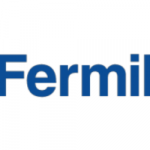Innovative Method to Create Tailor-Made Qubits by UChicago, Northwestern Scientists Could Boost Computing, Sensing

(UChicago) An interdisciplinary team of physicists and chemists at the University of Chicago and Northwestern University has developed a new method to create tailor-made qubits: by chemically synthesizing molecules that encode quantum information into their magnetic, or “spin,” states. This new bottom-up approach could ultimately lead to quantum systems that have extraordinary flexibility and control, helping pave the way for next-generation quantum technology.
This is a proof-of-concept of a powerful and scalable quantum technology,” said David Awschalom, the Liew Family Professor in Molecular Engineering at University of Chicago’s Pritzker School of Molecular Engineering who led the research along with his colleague Danna Freedman, Professor of Chemistry at Northwestern University. “We can harness the techniques of molecular design to create new atomic-scale systems for quantum information science. Bringing these two communities together will broaden interest and has the potential to enhance quantum sensing and computation.”
“Over the last few decades, optically addressable spins in semiconductors have been shown to be extremely powerful for applications including quantum-enhanced sensing,” said Awschalom, who is also director of the Chicago Quantum Exchange and director of Q-NEXT, a Department of Energy National Quantum Information Science Research Center led by Argonne National Laboratory. “Translating the physics of these systems into a molecular architecture opens a powerful toolbox of synthetic chemistry to enable novel functionality that we are only just beginning to explore.”
“Our results open up a new area of synthetic chemistry. We demonstrated that synthetic control of symmetry and bonding creates qubits that can be addressed in the same way as defects in semiconductors,” Freedman said. “Our bottom-up approach enables both functionalization of individual units as ‘designer qubits’ for target applications and the creation of arrays of readily controllable quantum states, offering the possibility of scalable quantum systems.”


















